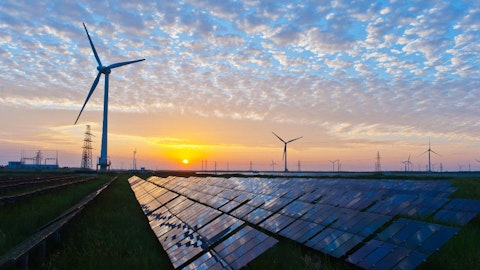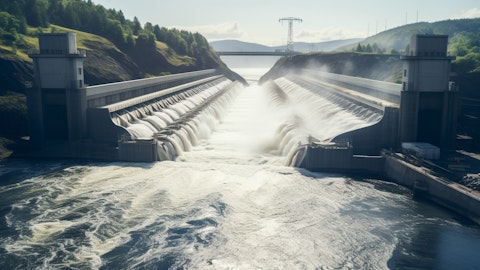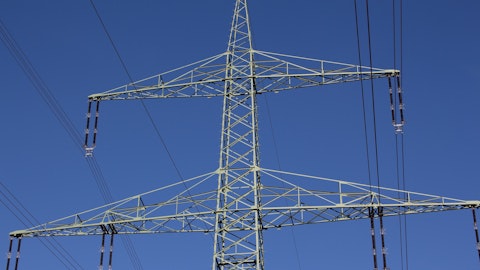We are also seeing strong cash flows from the closing of the previously mentioned major acquisitions that took place in the final three months of the year and are expected to contribute over $100 million in incremental annual FFO. We also expect to receive an uplift as our fleet reverts to long-term average generation, particularly from our hydro-assets where we often see cyclicality. During the year, we continued to execute on our growth initiatives, as Connor highlighted, while simultaneously strengthening our balance sheet. We executed on almost $15 billion in non-recourse financing, generating almost $500 million in up-financing proceeds to Brookfield Renewable. We were also successful with our capital recycling program, which we continue to scale with our development growth, generating $800 million of proceeds over the past 12 months, representing over three times our invested capital.
We take a disciplined and practical approach to asset rotation, looking to sell assets when they are in demand and attracting valuations at or above our internal assessments, regardless of technology or geography. This approach has served us well and generated returns above our underwriting targets for investors. During the second half of the year, we saw a disconnect between the price of our shares in the public markets and the underlying value of our business and took that opportunity to repurchase 2 million units under our normal course issuer bid. Looking forward, we will continue to allocate capital based on where we are seeing the best risk adjusted returns and remain confident we will continue to create meaningful value for our investors going forward.
In closing, we remain focused on delivering 12% to 15% long-term total returns for our investors while remaining disciplined allocators of capital, leveraging our deep funding sources, and operational capabilities to enhance and de-risk our business. On behalf of the Board of Management, we thank all our unit holders and shareholders for the ongoing support. We are excited about Brookfield Renewable’s future and look forward to updating you on our progress throughout 2024. That concludes our formal remarks for today’s call. Thank you for joining us this morning. And with that, I’ll pass it back to our operator for questions.
End of Q&A: [Operator Instructions] Please stand by while we compile the Q&A roster. Our first question comes from the line of Sean Steuart with TD Securities.
Sean Steuart: Thank you. Good morning. A few questions on the corporate PPA environment. Can you give us perspective on price terms, how that’s trended? I know there’s an upward trend, but specific to the contracts you’re signing, how that trend for pricing has evolved and how that tension relates to contract duration. I know there’s been a general trend towards longer-term contracts. How does that interplay with the price terms you can attain right now?
Connor Teskey: Good morning, Sean. Thanks for the question. So maybe we’ll come at this in a slightly different way, but we’ll answer your question head on. What we are seeing as a result of significant increases in new electricity demand. This is being driven by the data center demand. This is being driven by increased penetration of EVs. This is being driven by electrification of industrial processes is right now there is far more corporate off take demand than there are ready to build projects. In key locations there is simply a supply demand imbalance in favour of those that have ready to build projects in key locations. And the way this shows up in terms of pricing is the dynamic that we’ve been seeing for a number of years now, which is we are able to pass-through higher CapEx costs, higher funding costs, through to the off-taker in the form of higher PPA prices while preserving our development margin.
And therefore we are able to continually service this increased amount of demand and put more projects through into that increased amount of demand at the same development returns that we were seeing previously, if not even a little bit higher today because of that really robust supply demand dynamic. So that’s what we’re seeing in terms of pricing. It will obviously depend on the respective power market and things like CapEx and funding costs within those respective markets. But what we are seeing because of that increased demand is the ability to preserve or even perhaps marginally enhance our development margins. And then in terms of contract duration, one thing, we have been very uncompromising about for years now is there’s been this perception that as renewables over the last 10 years came off government feed-in tariffs increasingly onto corporate contracts, that meant that contract durations got shorter.
We simply aren’t seeing that. And we are seeing significant demand for long-term corporate contracts 15, 17, 18, 20 years. And those are obviously very attractive to us and can be financed very attractively if we deal with high credit quality counterparties. And that’s really the bulk of demand that we’re seeing today.
Sean Steuart: Thanks for that detail. And then just one follow on with respect to data centers. I know, at least in the US, the location of those data centers tends to be quite concentrated in specific regions. How do you expect that will evolve and can you give perspective on Brookfield’s ability to meet demand in those specific areas?
Connor Teskey: Sean, it’s a really astute question because you’re absolutely right. This demand, well, significant is not equal in all places. The power needs to be in a place where it can service that corporate demand load. But we are seeing a number of dynamics. First and foremost, the ability to work with the counterparties where is there the potential to co-locate new data centers near power generation that can be built. And our really strong relationships with the large corporate off takers is we can proactively work with them to identify those locations and then either through M&A or through Greenfield Development prospecting we can look to create development pipeline in those regions to service that demand. The second point I would make in regards to your question here is the opportunity to service this corporate demand is really today.





